“Discover the Purr-fect Litter for Your Feline Friend!”
Introduction
Cats are beloved pets, and one of the most important things to consider when caring for them is the type of litter you use. There are many different types of cat litter available, and each has its own advantages and disadvantages. In this article, we will discuss the different types of cat litter and how to choose the right one for your cat. We will also discuss the importance of proper litter box maintenance and how to keep your cat’s litter box clean. Finally, we will discuss the environmental impact of cat litter and how to make sure you are choosing an eco-friendly option.
Exploring the Different Types of Cat Litter: Clumping, Non-Clumping, and Natural Alternatives
Cat litter is an essential part of cat ownership, and there are a variety of types available to suit different needs. Clumping litter is the most popular type, as it is easy to use and effective at trapping odors. Non-clumping litter is also available, and is often preferred by those who have multiple cats or who want to avoid the dust associated with clumping litter. Natural alternatives, such as wood pellets, are also available for those who want to avoid the chemicals found in traditional litters.
Clumping litter is made from clay, and it forms clumps when it comes into contact with moisture. This makes it easy to scoop out the clumps and dispose of them, while the remaining litter can be reused. Clumping litter is also effective at trapping odors, making it a popular choice for many cat owners. However, it can be dusty, and some cats may be sensitive to the chemicals used in the clay.
Non-clumping litter is made from a variety of materials, including silica, corn, and wheat. It does not form clumps when it comes into contact with moisture, so it must be completely replaced when it becomes soiled. Non-clumping litter is less dusty than clumping litter, and it is often preferred by those who have multiple cats. However, it is not as effective at trapping odors, so it may need to be changed more frequently.
Natural alternatives to traditional cat litter are becoming increasingly popular. Wood pellets are a popular choice, as they are biodegradable and do not contain any chemicals. They are also dust-free and effective at trapping odors. However, they can be more expensive than traditional litters, and they may need to be changed more frequently.
No matter which type of litter you choose, it is important to keep your cat’s litter box clean and fresh. Regularly scoop out the litter and replace it when necessary to ensure your cat’s health and comfort.
How to Choose the Right Cat Litter for Your Feline Friend
Choosing the right cat litter for your feline friend is an important decision. The type of litter you select can have a significant impact on your cat’s health and wellbeing. Here are some tips to help you make the best choice for your pet.
First, consider your cat’s preferences. Some cats prefer a softer texture, while others may prefer a more absorbent litter. Experiment with different types of litter to find out which one your cat likes best.
Second, consider the type of litter. Clumping litter is the most popular type of litter, as it is easy to scoop and dispose of. Non-clumping litter is also an option, but it is more difficult to clean up.
Third, consider the odor control. Some litters are designed to reduce odors, while others are not. If you have a particularly smelly cat, you may want to opt for a litter that is designed to reduce odors.
Fourth, consider the dust levels. Some litters are designed to reduce dust, while others are not. If you have a cat with allergies, you may want to opt for a litter that is designed to reduce dust.
Finally, consider the cost. Some litters are more expensive than others, so you may want to consider your budget when making your decision.
By considering your cat’s preferences, the type of litter, the odor control, the dust levels, and the cost, you can make an informed decision about the right cat litter for your feline friend.
The Pros and Cons of Using Clumping Cat Litter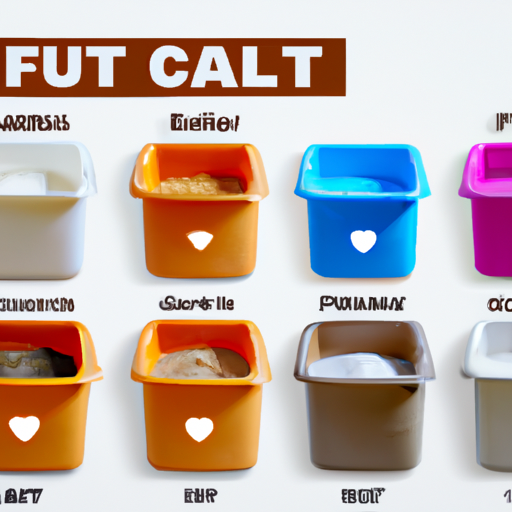
Clumping cat litter is a popular choice for many cat owners, as it offers a number of advantages over traditional non-clumping litter. However, there are also some potential drawbacks to consider before making a decision. This article will discuss the pros and cons of using clumping cat litter.
Pros
One of the main advantages of clumping cat litter is that it is much easier to clean. Clumping litter forms solid clumps when it comes into contact with moisture, making it easier to scoop out and dispose of. This means that the litter box can be kept much cleaner and fresher for longer.
Clumping litter also tends to be more absorbent than non-clumping litter, meaning that it can absorb more liquid and odors. This makes it a great choice for households with multiple cats, as it can help to keep the litter box smelling fresh.
Finally, clumping litter is often more cost-effective than non-clumping litter, as it can last longer before needing to be replaced.
Cons
One of the main drawbacks of clumping litter is that it can be more difficult to clean up after a cat has used the litter box. Clumping litter can stick to the cat’s fur, making it harder to remove. This can be especially problematic if the cat has long fur.
Clumping litter can also be more expensive than non-clumping litter, as it tends to be more absorbent and therefore requires more frequent replacement.
Finally, some cats may be put off by the texture of clumping litter, as it can be quite hard and uncomfortable for them to walk on.
In conclusion, clumping cat litter offers a number of advantages over non-clumping litter, such as being easier to clean and more absorbent. However, there are also some potential drawbacks to consider, such as the difficulty of cleaning up after a cat has used the litter box and the potential for it to be more expensive. Ultimately, the decision of whether to use clumping or non-clumping litter should be based on the individual needs of the cat and the preferences of the owner.
The Benefits of Natural Cat Litter Alternatives
Natural cat litter alternatives offer a variety of benefits for both cats and their owners. These alternatives are typically made from natural materials such as wood, paper, or plant-based materials, and are often more eco-friendly than traditional clay-based litters. In addition to being more environmentally friendly, natural cat litter alternatives can also provide a number of other benefits.
One of the primary benefits of natural cat litter alternatives is that they are often more absorbent than traditional clay-based litters. This means that they can help to reduce odors and keep the litter box area cleaner for longer. Natural litter alternatives are also typically dust-free, which can help to reduce the amount of dust and allergens in the air. This can be especially beneficial for cats and owners who suffer from allergies.
Another benefit of natural cat litter alternatives is that they are often more biodegradable than traditional clay-based litters. This means that they can be disposed of more easily and with less environmental impact. Natural litter alternatives are also typically more lightweight than traditional litters, making them easier to transport and store.
Finally, natural cat litter alternatives are often more affordable than traditional clay-based litters. This can be especially beneficial for owners on a budget, as natural litter alternatives can help to reduce the cost of maintaining a litter box.
Overall, natural cat litter alternatives offer a variety of benefits for both cats and their owners. These alternatives are typically more absorbent, dust-free, biodegradable, lightweight, and affordable than traditional clay-based litters. For these reasons, natural cat litter alternatives can be a great choice for cat owners looking for an eco-friendly and cost-effective option.
Understanding the Different Types of Odor Control Cat Litter and How to Choose the Right One
When it comes to odor control, cat litter is an essential part of keeping your home smelling fresh and clean. There are many different types of cat litter available, each with its own unique benefits and drawbacks. Understanding the different types of cat litter and how to choose the right one can help you make an informed decision when it comes to keeping your home smelling pleasant.
Clay litter is the most common type of cat litter and is made from bentonite clay. It is highly absorbent and helps to trap odors, making it an effective choice for odor control. Clay litter is also relatively inexpensive and easy to find. However, it can be dusty and can be tracked around the house, making it a less than ideal choice for some households.
Silica gel litter is made from silica gel crystals and is highly absorbent. It is also very lightweight and does not track as easily as clay litter. Silica gel litter is also very effective at trapping odors, making it a great choice for odor control. However, it can be more expensive than clay litter and is not as widely available.
Biodegradable litter is made from natural materials such as wood, corn, or wheat and is designed to break down over time. It is highly absorbent and helps to trap odors, making it an effective choice for odor control. Biodegradable litter is also environmentally friendly and is becoming increasingly popular. However, it can be more expensive than other types of litter and is not as widely available.
When choosing the right type of cat litter for odor control, it is important to consider your budget, the size of your cat’s litter box, and the type of odor control you are looking for. Clay litter is the most affordable and widely available option, while silica gel litter is lightweight and highly absorbent. Biodegradable litter is environmentally friendly and helps to trap odors, but it can be more expensive. Ultimately, the best type of litter for odor control will depend on your individual needs and preferences.
Q&A
Q1: What are the different types of cat litter?
A1: The most common types of cat litter are clay, silica gel, wood, paper, and biodegradable. Each type has its own advantages and disadvantages.
Q2: What are the advantages and disadvantages of clay litter?
A2: Clay litter is the most common type of litter and is usually the least expensive. It is also very absorbent and clumps well, making it easy to scoop. However, it can be dusty and can track easily.
Q3: What are the advantages and disadvantages of silica gel litter?
A3: Silica gel litter is very absorbent and clumps well, making it easy to scoop. It is also dust-free and does not track. However, it is more expensive than clay litter and can be difficult to find in stores.
Q4: What are the advantages and disadvantages of wood litter?
A4: Wood litter is biodegradable and is usually made from recycled wood chips. It is dust-free and does not track. However, it is not as absorbent as clay or silica gel litter and can be more expensive.
Q5: How do I choose the right type of litter for my cat?
A5: The best way to choose the right type of litter for your cat is to consider your cat’s preferences, your budget, and the type of litter box you have. If your cat is picky, you may want to try a few different types of litter to see which one they prefer. If you have a tight budget, you may want to opt for a more affordable option such as clay litter. If you have a covered litter box, you may want to choose a litter that does not track, such as silica gel or wood litter.
Conclusion
In conclusion, choosing the right type of cat litter for your cat can be a difficult decision. However, by considering your cat’s preferences, your budget, and the type of litter that best suits your lifestyle, you can make an informed decision that will keep your cat happy and healthy. With the right type of litter, you can ensure that your cat has a clean and comfortable environment to live in.



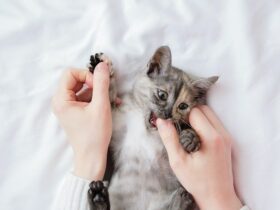
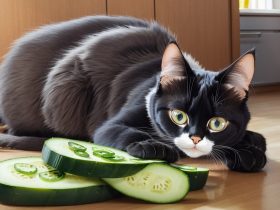
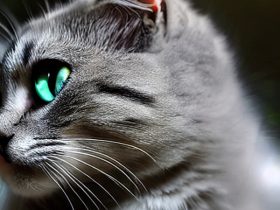
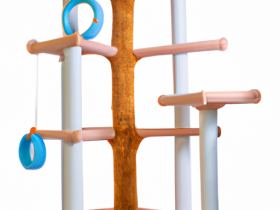
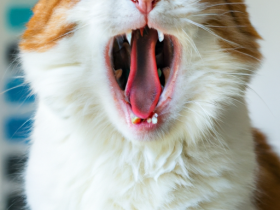
Leave a Reply
View Comments